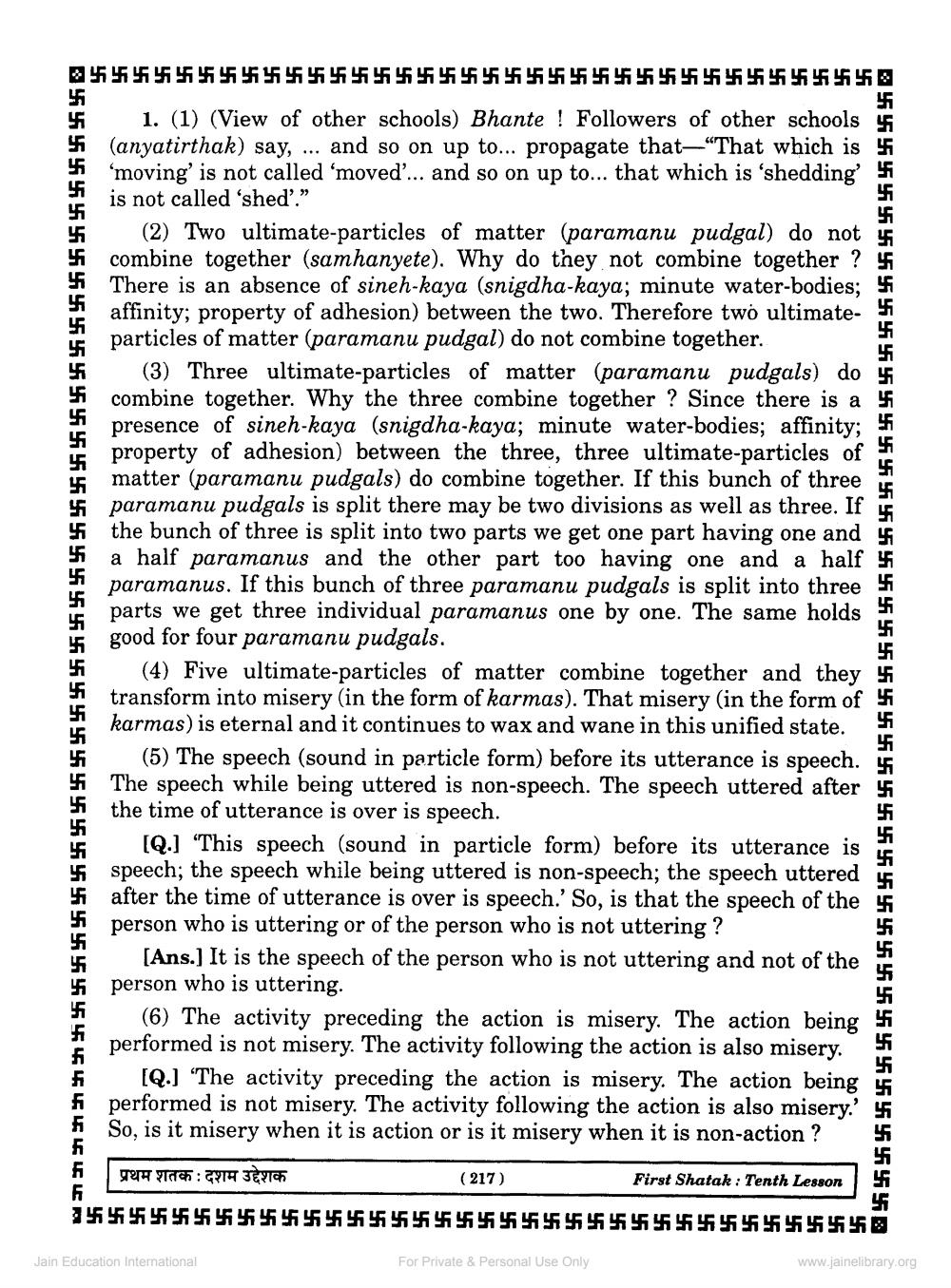________________
4545454545454 455 456 457 455 456 457 455 456 457 455 456 457
451 455 456 457 455 455 456 457
455 456 457 455 456 45
456 457 4545
447 46 454 455 456 457 455
$$$$$$$$45 446
1. (1) (View of other schools) Bhante ! Followers of other schools (anyatirthak) say, ... and so on up to... propagate that—"That which is 'moving' is not called 'moved'... and so on up to... that which is 'shedding' is not called 'shed'.”
(2) Two ultimate-particles of matter (paramanu pudgal) do not combine together (samhanyete). Why do they not combine together ? 4 There is an absence of sineh-kaya (snigdha-kaya; minute water-bodies; affinity; property of adhesion) between the two. Therefore two ultimate- 4 particles of matter (paramanu pudgal) do not combine together.
(3) Three ultimate-particles of matter (paramanu pudgals) do combine together. Why the three combine together ? Since there is a presence of sineh-kaya (snigdha-kaya; minute water-bodies; affinity; property of adhesion) between the three, three ultimate-particles of matter (paramanu pudgals) do combine together. If this bunch of three paramanu pudgals is split there may be two divisions as well as three. If the bunch of three is split into two parts we get one part having one and a half paramanus and the other part too having one and a half paramanus. If this bunch of three paramanu pudgals is split into three parts we get three individual paramanus one by one. The same holds good for four paramanu pudgals.
(4) Five ultimate-particles of matter combine together and they transform into misery (in the form of karmas). That misery (in the form of 5 karmas) is eternal and it continues to wax and wane in this unified state.
(5) The speech (sound in particle form) before its utterance is speech. 4 The speech while being uttered is non-speech. The speech uttered after the time of utterance is over is speech.
(Q.) 'This speech (sound in particle form) before its utterance is speech; the speech while being uttered is non-speech; the speech uttered after the time of utterance is over is speech.' So, is that the speech of the person who is uttering or of the person who is not uttering?
[Ans.] It is the speech of the person who is not uttering and not of the person who is uttering.
(6) The activity preceding the action is misery. The action being performed is not misery. The activity following the action is also misery.
(Q.) "The activity preceding the action is misery. The action being performed is not misery. The activity following the action is also misery.' So, is it misery when it is action or is it misery when it is non-action ?
$$$456 45 46 47 46 45 44 45 46 45 44 445 446 444 445 446 4545454545454545454 45 46 47 46 45 46 47 46 45 4
$$$$$$
nnnnnn
प्रथम शतक : दशम उद्देशक
(217)
First Shatak: Tenth Lesson
34444444444444444444444444444444444444412
Jain Education International
For Private & Personal Use Only
www.jainelibrary.org




